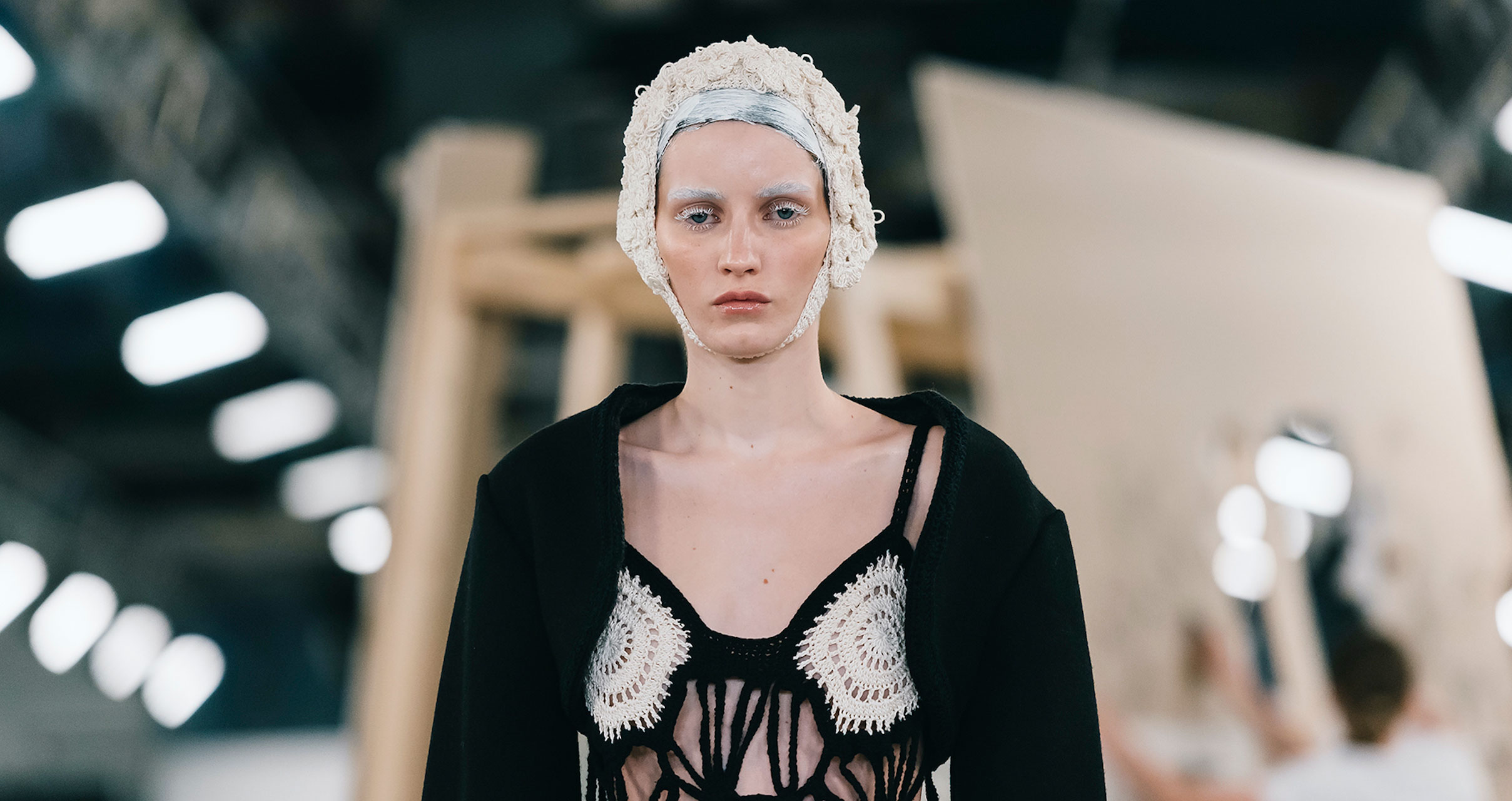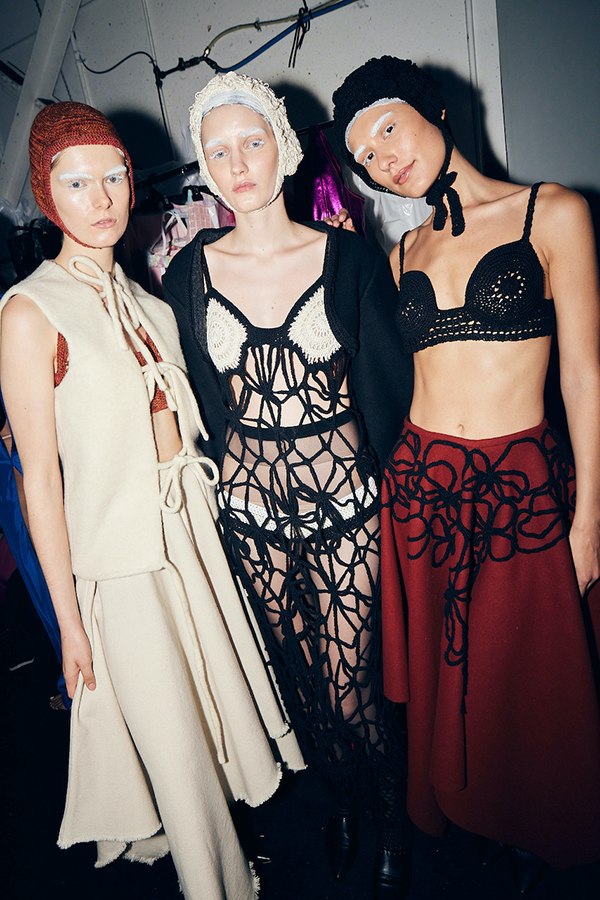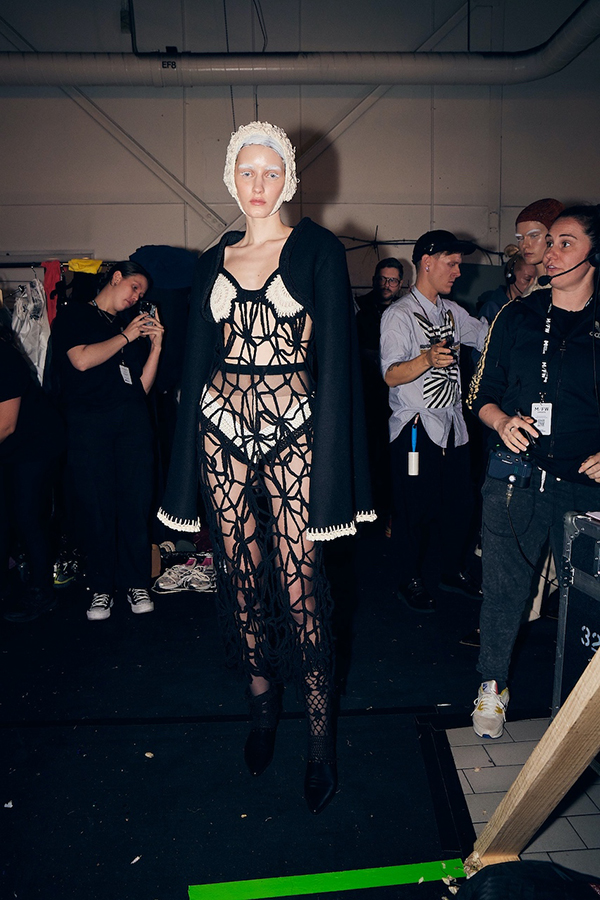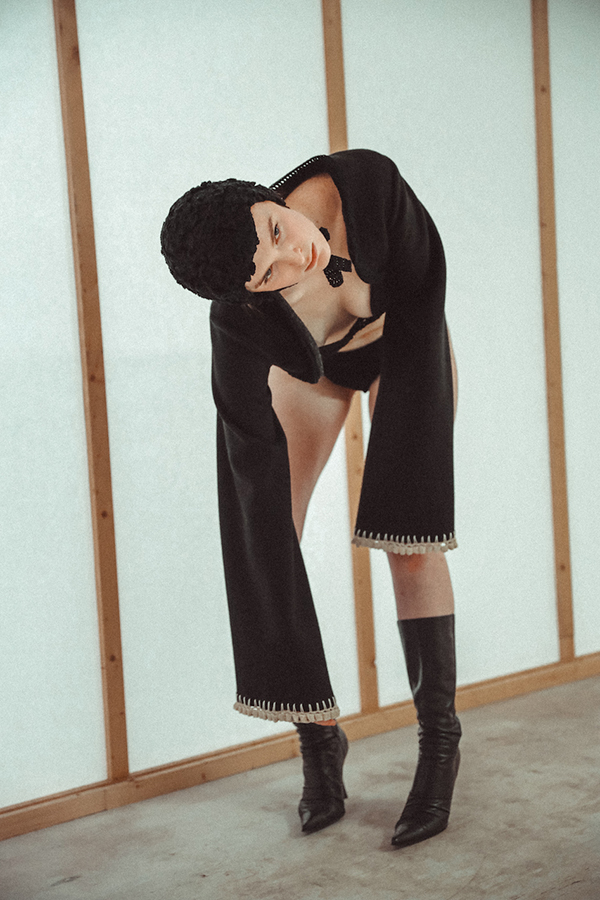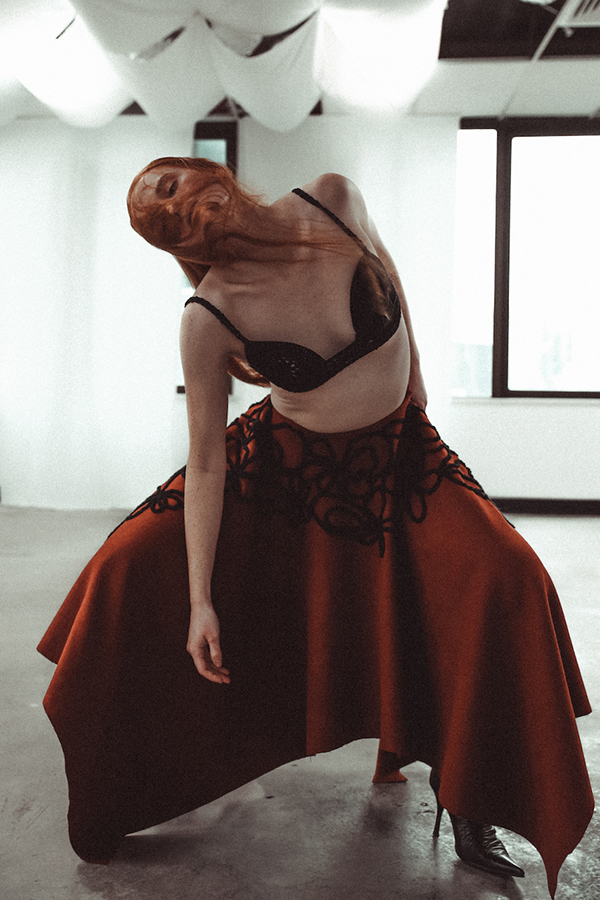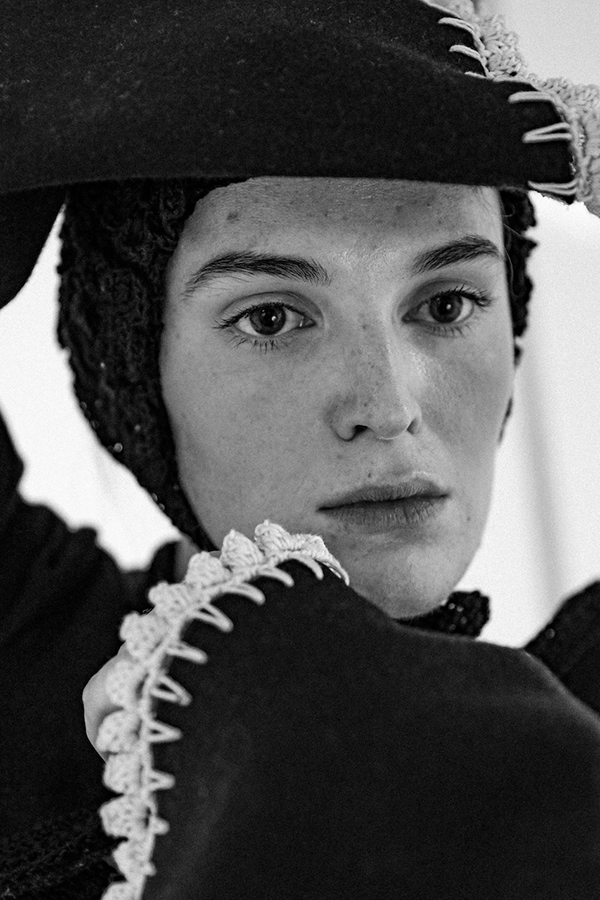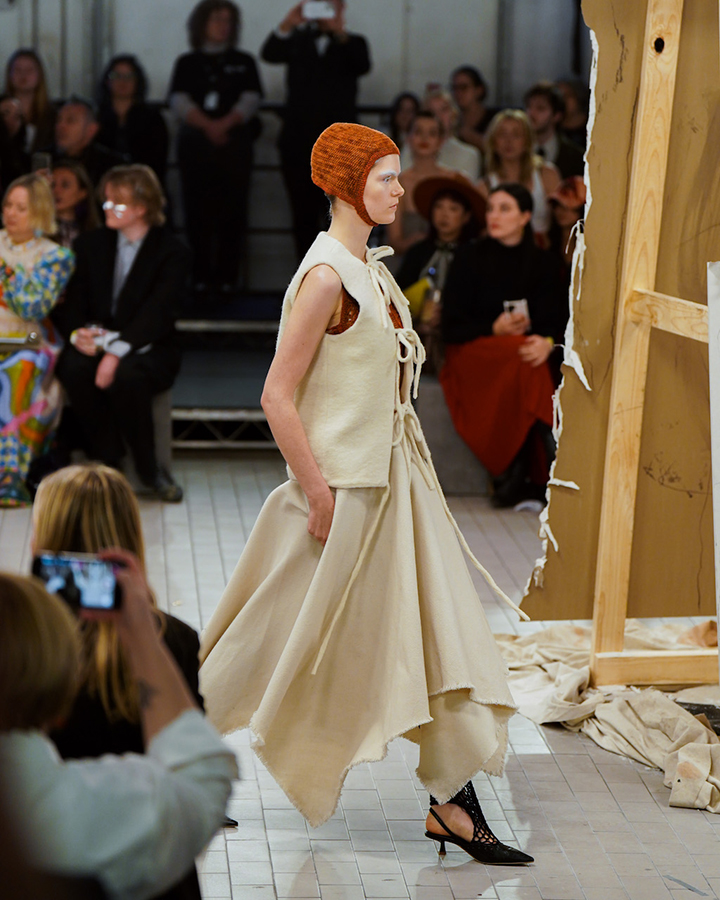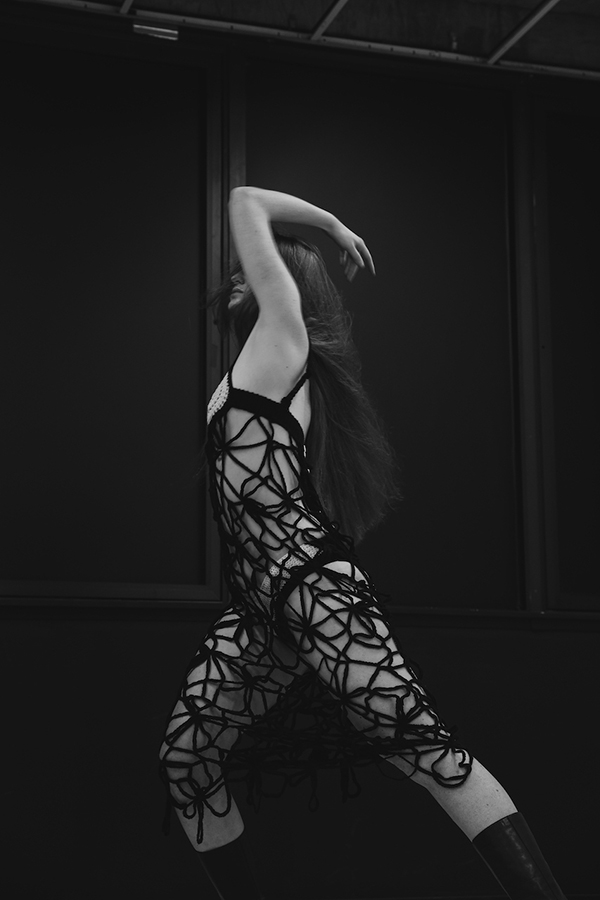This creative journey takes inspiration from the visual opulence, decadent symbolism and eroticism of Sergei Diaghilev’s 20th Century Les Ballet Russes, whose imaginative productions celebrated cross-cultural aesthetics, theatricality, and the evocative power of costume.
The abundant designs of the Ballet, with their exaggerated silhouettes, elaborate layers, and dynamic interplay of textiles, reflected an aesthetic complexity that drew upon European and Balkan influences. The richness of colours, intricate motifs, and voluminous shapes in the costumes echoed the expressive potential of the Macedonian costume, which like ballet, is performed through movement and storytelling.
The design process for this collection began as methodical and iterative, rooted in a rigorous analysis of my grandmother’s traditional Macedonian costume. The process commenced with archival research, examining the woven adornments, domestic hand-crafted customs, and ornamental configurations of the historical garment. Each element of the costume — Koshula, Klashenik, Prestilka, Elek, Samifche, and Kojstek — was deconstructed into individual components to investigate construction techniques, layering systems, and traditional methods such as crochet and trapunto embroidery.
This analytical process informed a contemporary reinterpretation, whereby the original layered structure was adapted into modular forms; including headpieces, intimates, quadrant-tailored garments, and accessories. The implementation phase involved two-dimensional tailoring methodologies to ensure precision in translating historical forms into wearable pieces.
The geometricized floral patterns and embroidered appliques of my grandmother’s costume were explored through both traditional and modern crochet techniques. Prototyping and iterative testing refined fit, functionality, and aesthetic appeal, ensuring the final designs were innovative and practical.
The design brief was met through a minimalist approach. A monochromatic colour palette of bold and earthy tones, with deep burgundy reds, warm creams and black. I further refined the intricate motifs of the traditional embroidery by abstracting them into fragments. This combination provides contrast and grounding, enhancing the grandeur and richness of the overall palette.

